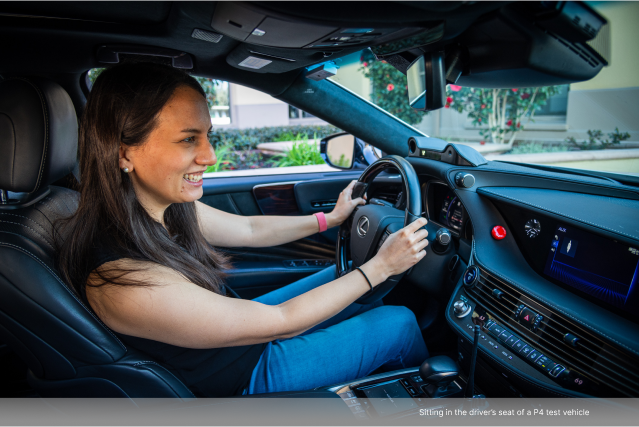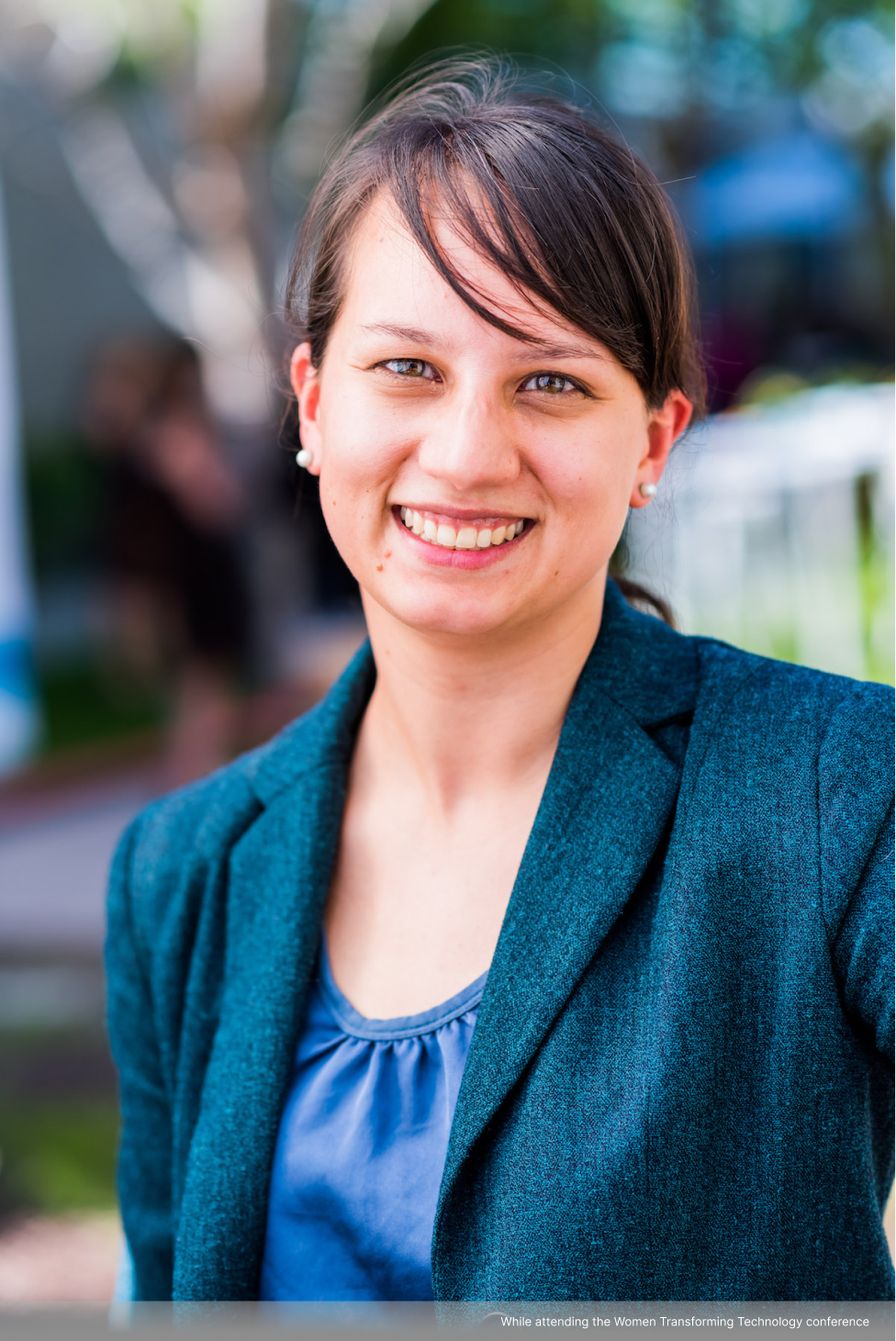⚑ Palo Alto, California
With a passion to put math to purpose, Sarah explains how she found her footing in the engineering world as well as how her team collaborates with engineers across the Pacific ocean to strengthen the safety of autonomous driving in every Toyota vehicle. She also shares her perspective on the key role that spaces for community play in empowering women in their roles.
Q: What exactly do you do in the Automated Driving Technologies and Advanced Driver Assistance Systems (AD/ADAS)’ Control team?
It’s a mouthful isn’t it. But we’re the team that develops control algorithms for autonomous cars. And that’s basically a bunch of fancy words for “we do the math and write the code to help cars control themselves without humans”. It’s also the code that helps cars augment humans to keep them safe. It’s problem solving with heavy-duty math, answering questions like “what steering angle do we send to the car in this driving situation?”, “how much throttle should the car engage in this situation where we need to turn left on this incline?” or “when should the car hit the brakes so that it doesn’t rear end the car in front of it?”. And that takes the shape of products like Teammate or Guardian that we’re helping build and expand with Toyota and Toyota Research Institute (TRI).

Q: And how did you get into this field of work?
Liking math! I have my math PhD mom to thank for that, and some great math teachers. But anyone studying control theory at grad school - Masters or PhDs - will get it because control theory math is really kind of complicated. In a cool, interesting way though. So for me, I was originally a student of theoretical math and I thought it was interesting. The differential equations, the linear algebra, the matrices… all of it was super interesting because math problems are just sort of like interesting puzzles to me. But then the further I got, I started to ask myself the question “How exactly does any of this matter to the world?”.
And so I went into mechanical engineering for college because it was the most obvious way to apply math to the world around me, and I think I landed in autonomous and assisted driving tech because of how big the potential scale of impact could be through that applied math. It’s not just one car. It’s every car. Well, every Toyota car if we’re being specific with Woven by Toyota but that in itself is huge.
Q: You mentioned your mom being a PhD mathematician. What influence did she have on your pursuit of this career?
She helped me keep the interest and get into that next level of math for sure. Her dad was a physics professor so there's a lot of physics, engineering and math history in my family. But I’ll be honest, sometimes the math was very abstract and I didn’t find that very interesting. She helped me keep my interest and kept encouraging me to explore this new angle of math or that other angle. I think that’s what led me finding and going down the applied math, mechanical engineering route.
I will say that I was definitely very lucky to have my mom as a role model. I know very few people have that direct family connection but if that’s not you, I’d say it’s a great idea to reach out and build connections with people like teachers or people who are further in their career than you. They can help you see what a path for you might look like in that field, and you can decide if it’s for you or not.
Q: In your time at Woven by Toyota so far, what would you say is one of your most memorable moments and why?
I would say the project where I got to land code on a car, improving the comfort of the Advanced Drive system. For most people coming from academia (i.e. from a PhD) like me, it is very hard to bridge the gap from R&D to product so this was a very exciting moment for me.

Q: What do you think is the biggest enabler of a cross-cultural working environment like Woven by Toyota’s?
100% communication but being very factual, very honest and very frequent with it. Especially when there are problems or errors, any delay in communication or vagueness is the real enemy. As soon as someone hides something, or has the wiggle room to interpret something multiple different ways, that’s when you start to get mistrust in the collaboration. Misunderstandings and misalignments that cause delays and even more problems. Be straight. Be factual. And constantly communicate updates, however small they might seem!
Q: This year’s international women’s day theme is “Invest in Women. Accelerate progress”. What’s a big challenge that you think women face that companies can invest in?
The biggest “challenge” that women face isn’t necessarily a gender specific point, but more about general belonging and inclusion. If you feel like you’re an outsider, and aren’t in the right circles, it’s hard to be seen and with it, hard for your work to be seen, connected, recognized and grown. I think what companies can do is invest in creating those spaces where you can create that sense of belonging with people who have similar interests to you.
It can be anything really. An official Employee Resource Group sure, but also things like interest groups. It might sound trivial but a place for people who like dogs to go talk about their dogs, helps to create that opportunity to connect with a colleague and build a relationship with them over that topic. “You like plants? I like plants! Oh and you do ABC at Woven? Can I ask you about XYZ?” So that’s my advice. Invest in creating those places where people can build community and relationships so they feel like they belong, and can find the avenues to be successful in their role.

Q: Thanks for your time Sarah, what’s on the horizon that you’re excited about?
There’s just so much on the table still. From a technical standpoint, there’s still a lot of low hanging fruit to do with current AD/ADAS systems that I think we can tackle and improve from a safety and risk assessment perspective. And not just for people inside the car driving, but pedestrians and other road users. The next iterations of Guardian for example. That’s going to be really interesting to see out in the real world - like in my own Toyota car.